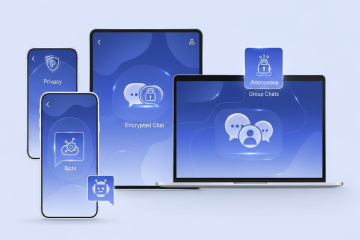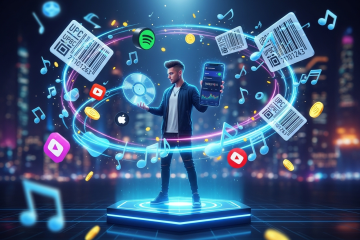Introduction
The barcode, a ubiquitous technology known for its familiar “beep” sound when scanned, has revolutionized various industries, including retail, hospitality, healthcare, logistics, and more. Its impact on business transactions and tracking has made processes faster, easier, and safer. Furthermore, the barcode has paved the way for innovative solutions like QR codes, radio frequency identification (RFID), fixed industrial scanning, and machine vision. Despite its seamless integration into everyday life, the barcode’s development was a product of the grocery sector’s need to address long checkout queues and manage the influx of post-World War II baby boomer shoppers. This article explores the evolution and widespread usage of barcodes, highlighting their significant impact on various sectors.
Origin and Development of Barcodes
George J. Laurer, an IBM engineer, is credited with the creation of the barcode. He transformed a bulls-eye concept initially conceptualized by Joe Woodland in the 1940s into the Uniform Product Code (UPC), now known as GS1 Global Trade Item Numbers (GTINs), commonly referred to as barcodes. The barcode gained prominence when Marsh’s Supermarket in Ohio installed the first UPC scanner in 1974, resulting in reduced checkout times and improved associate productivity.
Widespread Usage and Impact
The barcode’s usage has grown exponentially, and it is estimated that it is scanned over 10 billion times daily worldwide. Barcodes have significantly impacted the retail industry by streamlining shopping experiences, boosting efficiency, and providing flexibility and convenience for customers. They have facilitated the rise of the “buy online pick-up in store” shopping model, aligning with consumers’ preferences for quick transactions. Over time, barcodes have evolved from traditional one-dimensional lines and spaces to two-dimensional QR codes, enabling additional information storage. Manufacturers also utilize three-dimensional barcodes engraved into machinery, enhancing information reading and scanning capabilities through fixed industrial scanning and computer vision.
Barcodes in Various Industries
Barcodes have found applications beyond retail. Schnucks, a major US supermarket chain, is transitioning from one-dimensional barcodes to two-dimensional barcodes. The emergence of technologies like “Amazon Go” has further revolutionized the shopping experience by eliminating the need for physical scanning and payment. However, scanning a QR code is still required for entry, as artificial intelligence, computer vision, and sensor data ensure accurate billing for the items taken.
RFID technology takes barcodes to the next level by enabling accurate and efficient tracking in scenarios where line of sight is challenging. Industries such as retail, warehouses, transportation, logistics, and healthcare utilize barcodes and scanners to track inventory, equipment, medications, and even patients. Barcodes play a vital role in healthcare, ensuring accurate patient identification, medication management, and treatment tracking, thereby minimizing errors.
The Future of Barcode Technology
Fixed industrial scanning, an emerging trend in industrial automation, utilizes barcode scanning to provide real-time updates on items moving along conveyor belts or order fulfillment lines. These scanners verify checkpoint passage, label accuracy, and facilitate shipment routing. With machine vision capabilities, these scanners can also identify items that fail to meet quality standards, preventing their return.
Conclusion
The barcode, a technology that has stood the test of time, continues to play a crucial role in our daily lives. Its adoption has transformed industries by enhancing efficiency, accuracy, and convenience. From its humble beginnings in grocery stores to its evolution into various forms like QR codes and RFID, the barcode has left an indelible mark on business processes and customer experiences. As technology advances, the barcode will likely continue to adapt and find new applications, further revolutionizing the way we conduct transactions and track information.
Sources:
- “Barcodes: A History,” GS1 Australia.
- “The Barcode: A Brief History and Explanation,” Microscan.
- “A Brief History of the Barcode,” GS1 US.
- “The Evolution of Barcodes,” Scandit.
- “Barcodes and RFID Technology in Healthcare,” Healthcare IT News.
- “Barcode Scanning for Industrial Automation,” Cognex.
- Buy cheap wholesale barcodes for Amazon, Google Merchant, Itunes, Shopify and other stores and international marketplaces here: https://mirosel.com/shop/
- Free online barcode and QR code generator here: https://barcode.tec-it.com/en


